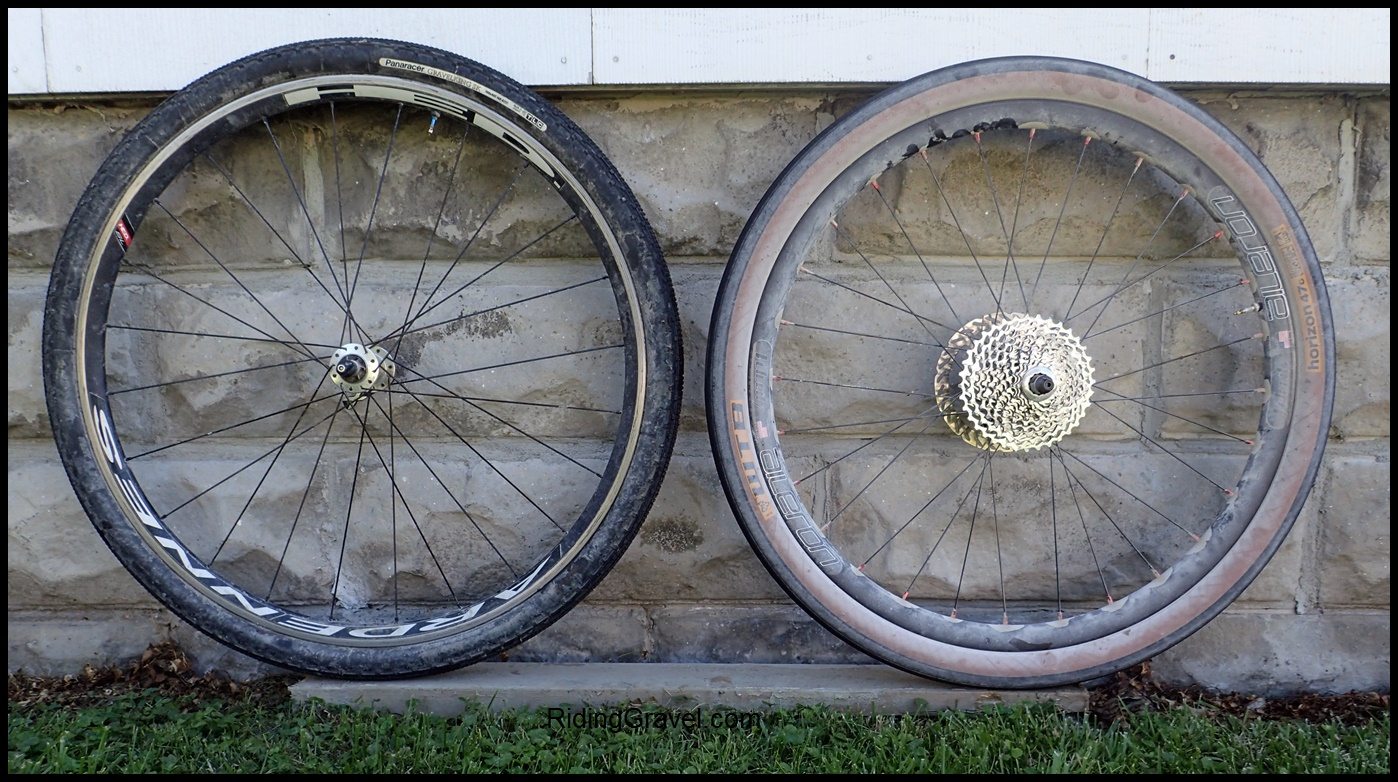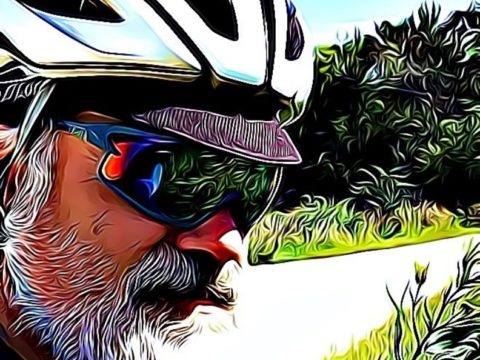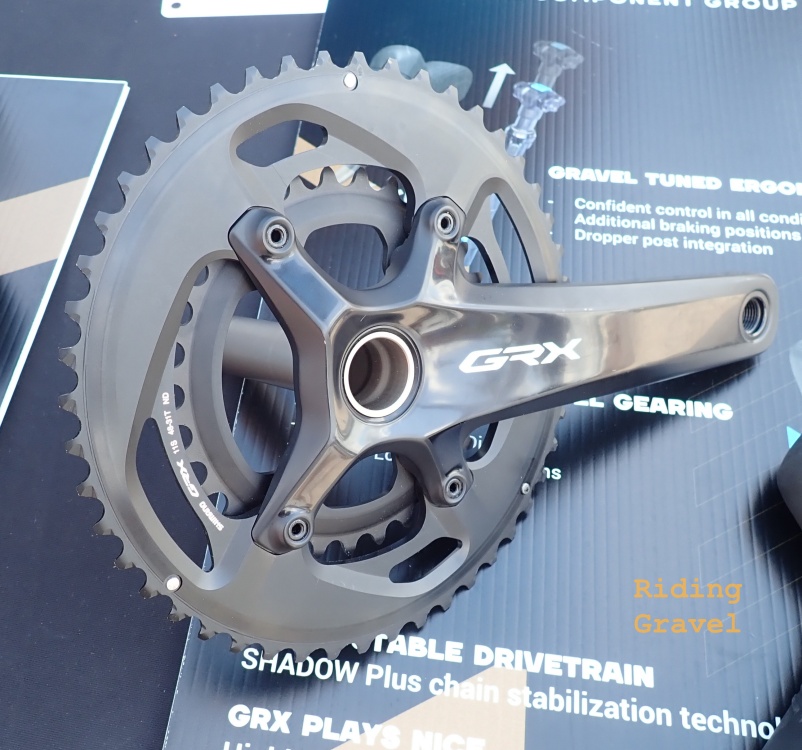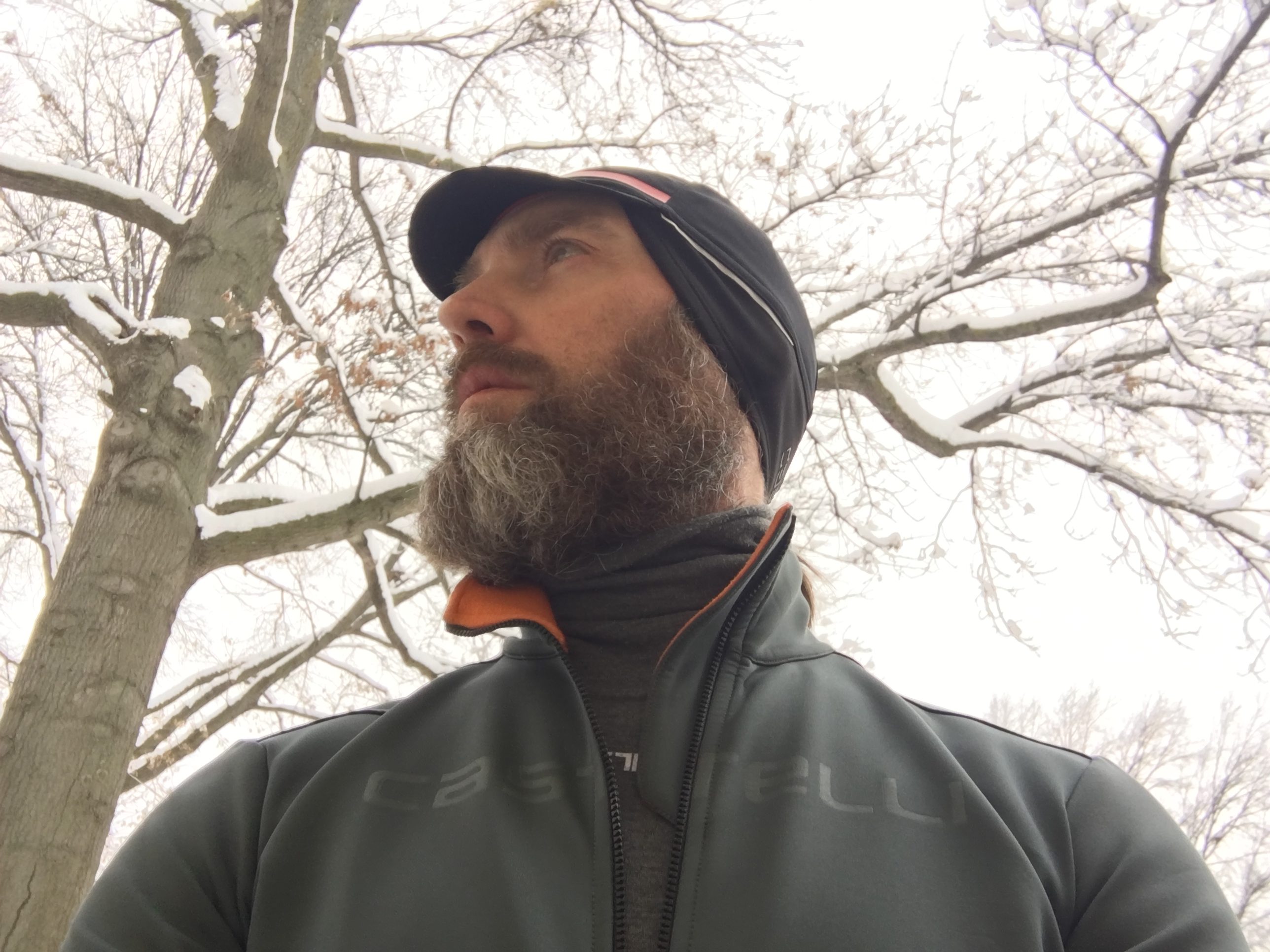Toward Better Concussion Prevention – by John Ingham
Concussions are all too common. We try to be careful, yet all of us have lapses of attention and moments of poor judgment. We wear helmets, but standard helmets and even slip-lined helmets are only partially effective. Fortunately, fatalism and stiff upper lips are no longer our only remaining options. A new cellular-lined helmet may be far better at preventing concussion. Medical science is suggesting readily available ways to strengthen the brain against destructive secondary physiological processes in concussions. And by providing more stability and by supporting endurance over long distances, more compliant bikes with bigger tires and better vibration control add-ons are lessening chances of crashing.

RIDING SKILLS, BIKES, AND GEAR:
Avoiding injury still begins with mindfulness and riding skills. Finding the right line through deep gravel; braking properly; avoiding overlaps with the rear wheels of other riders; and negotiating ruts, ditches, potholes, sand traps, and deep mud puddles all deserve special care. One needs to be tuned in and fully present. When crashes occur, they usually go better if riders tuck their heads and roll into falls. Using hands can result in broken wrists and collar bones. Even so, hands can sometimes protect the face and head. This said, pushups are highly recommended, the more the better. It has been observed that older persons are more likely to survive falls when they work at improving upper body strength.
As effort and vibration take a toll on bike handling over ultra-long distances, keeping the rubber side down becomes more challenging. Compliant frames, bigger tires, and vibration- dampening seat posts, forks, and handlebar stems improve speed as well as endurance and control (Ingham).
BIOMECHANICS AND NEUROCHEMISTRY:
The approach here follows from the biomechanical and neurochemical nature of concussions. While linear forces can cause skull fractures and endocranial bleeding, most research finds that rotational acceleration plays a greater role in concussions and that it does so by shearing rather than compressing brain tissue. Brain tissue is more vulnerable to shear than compression, so for a given impact, brain damage from shear is correspondingly greater ( Kleiven ).
The physical strain of head blows on brain tissue triggers a destructive secondary chemical cascade. Potassium and glutamate immediately begin to leak out of cells, while an influx of calcium and sodium takes their place. The resulting ion imbalance leads to an energy crisis. A brief surge in glucose uptake is followed by depressed glucose metabolism, diminished ATP production in the mitochondria, reduced blood flow to the brain, destructive oxidation and free radicals, inflammation and swelling, impaired communication between neurons, and cell death. The excess intercellular glutamate is neurotoxic. This process takes days or weeks as the brain gradually re-regulates and heals itself ( Barkhoudarian ).

NUTRIENTS, DIET, AND FUELING:
Various nutrients and endogenous brain chemicals strengthen the brain in general, and in so doing probably strengthen it against concussion. The DHA in omega-3 oils from fish, fish oil, and krill oil promote stronger and more supple cell membranes in neurons, while the EPA suppresses neurological inflammation (Lewis). Brain-derived neurotrophic factor (BDNF) correlates significantly with concussion recovery and negatively with concussion-related pain (Khoury). BDNF is a brain protein that supports maintenance of existing neurons and promotes growth of new ones. Magnesium, curcumin, green tea, and various other foods and nutrients raise BDNF and/or dampen inflammation. Magnesium is crucial for brain health (magnesium L- theonate passes the blood-brain barrier more readily than other forms of magnesium). Its deficiency is notable in many neurodegenerative diseases. In concussion, it dampens the neurotoxic effect of intercellular glutamate. Zinc, vitamin D, creatine, and glutathione, the body’s most powerful antioxidant, also strengthen neural tissue or reduce damaging inflammation. In a study of concussed mice, applying glutathione directly to the skull (the skull is actually porous) reduced tissue damage by 67 percent (NIH). Precursors of glutathione include vitamin C, vitamin B3, alpha lipoic acid, N-Acetyl Cysteine (NAC), and the sulforaphane in broccoli.
Maintaining insulin sensitivity in the brain and healthy glucose metabolism may be especially important for protecting the brain against concussion. The glucose metabolism crisis in the secondary phase of concussion is damaging in any case, but it is likely to be even more so when glucose metabolism has already been compromised by chronically elevated blood glucose and central nervous system insulin resistance. Whether glucose metabolism has been damaged or not, shifting to fat adaptation or ketosis with a low sugar, low carb/high fat diet is likely to mitigate the damaging physiological effects of concussion. Damaged glucose metabolism does not affect the brain’s ability to burn ketone bodies as an alternative fuel. In ketosis, the brain shifts toward burning of ketone bodies and compromised glucose metabolism becomes less consequential. Various rodent studies show that low carb, low sugar diets protect against concussion and improve recovery from it. Accordingly, there is growing clinical interest in ketogenic, low carb eating in the treatment of human concussions ( Gasior ; McDougall). Avoiding sugar and carbohydrates also reduces inflammation and increases BDNF ( Gyorkas ). Conversely, high carbohydrate, high sugar diets promote obesity and diabetes mellitus and, with them, insulin resistance, conditions that are likely to exacerbate the secondary pathology in concussion. To make matters worse, insulin resistance and impaired glucose metabolism are strongly associated with reduced levels of magnesium and BDNF ( Krabbe ; de Valk).
Fueling is an issue that comes up when questioning sugar. It’s a tough one and I struggle with it myself. It deserves a post all by itself. But here is the short answer: fat adapted, ketogenic endurance athletes need far less sugar and are nearly bonk-proof, even with extended efforts approaching anerobic threshold (Volek). To be sure, changes in diet and fueling are not easy for most of us. And even though the studies cited here suggest that cutting back on sugar and high glycemic carbs offers some measure of neuroprotection, at this point we cannot say how much. A major change in diet might seem too daunting when benefits are uncertain. Nonetheless, it will be interesting to see how research on this issue develops. Meanwhile, there are other things we can do to prevent concussions and lessen their severity.

HEAT, DEHYDRATION, AND HYPERTHERMIC CONDITIONING:
Increases in core body temperature amplify brain injuries, whereas lowering core body temperature limits injury and speeds recovery (Atkins). Concussions are more likely to happen when intense exercise and high ambient temperature have raised core body temperature. Interestingly, the symptoms of concussion can resemble those of heat stroke.
Some researchers theorize that dehydration promotes concussion. Dehydration may reduce the volume of cerebrospinal fluid which ordinarily acts to cushion the brain, while more extreme dehydration shrinks brain matter and permits more twisting and turning of the brain inside the skull in response to impact ( Germanos ). The merit of these hypotheses is unclear, however. It is also unclear whether heat and dehydration are separate or interrelated risk factors. Practically, however, we should acclimate to heat and take care with hydration in any case. Heat stroke is a serious danger during endurance events in hot weather.
Heat acclimation may reduce risk of concussion. Along with improving heat tolerance, it promotes physical fitness, endurance, and brain health and resilience. Recent studies are demonstrating that frequent sauna use dramatically reduces risks for cardiovascular disease, common dementia, and Alzheimer’s. Saunas may have these effects in part because like exercise they improve blood circulation and delivery of nutrients to cells. They increase red blood cell count and endogenous EPO, the natural form of illegal synthetic EPO once used by Tour de France cyclists. Saunas also increase and preserve muscle and they increase endurance. In one group of competitive runners, post-workout sauna use increased endurance to exhaustion by 32% ( Scoon ). Remember that strength and endurance are factors in crashing.
More to the point, brain blood flow plays a critical role in the regulation of core body and brain temperature. Although saunas temporarily raise body temperature, regular saunas actually lower basal levels of core body temperature. Saunas increase BDNF, perhaps because here too they mimic exercise—endurance exercise is one of the most effective means there is
for raising BDNF levels. Saunas also increase circulating prolactin, a hormone that stimulates regeneration of damaged myelin sheaths of nerves. In addition, saunas activate heat shock proteins that repair and eliminate damaged brain proteins (Patrick).
NECK AND HEAD:
Neck muscle strength is inversely correlated with susceptibility to concussion. Strong necks absorb some of the linear and rotational acceleration in blows to the head. Accordingly, the risk of concussion declines by five percent with every additional pound one can lift with neck muscles. The greater neck strength of most males may partly explain why female athletes are more prone to concussions than male athletes in comparable sports (Collins; Rutgers). Necks can be strengthened with isometric exercises (Warren).

In April of 2019 Trek-Bontrager stunned the cycling world with an announcement that it was about to market a helmet that is 48 times more effective at preventing concussions than standard polycarbonate-foam helmets. The new technology places a cellular plastic liner inside standard helmets. Designed to “flex, crumple, and glide,” the liner is said to absorb not only linear forces that can crack skulls and cause hematomas but also rotational forces that are the primary cause of concussion (Bontrager). The WaveCel helmet thus competes with MIPS equipped helmets, which address rotational forces better than standard helmets but which offer no additional protection against linear forces (Lindsey).
A peer-reviewed paper co-authored by the engineers at the Legacy Biomechanics Laboratory who created WaveCel and scientists at the University of Strasbourg in France who calculated concussion risk found standard helmets reduce crash concussion risk to 59%, that MIPS-equipped helmets reduce it to 34%, and that WaveCel technology reduces it to only 1.2% ( Bliven ). Separately, the Virginia Tech Helmet Lab gave the new Bontrager WaveCel Specter its highest rating.
Not surprisingly, competitors were unhappy. MIPS complained that it could not reproduce the WaveCel results using its own testing protocol. In its late 2019 revised ranking, the Virginia Tech Helmet Lab further muddied the water. Two Lazer MIPS-equipped helmets were at the top of the list of road biking helmets, while the Specter WaveCel and the Ballista MIPS fell to third and fourth respectively. In the two previous rankings, the Ballista and Specter had taken turns at the very top. The VT Helmet Lab assigns a numerical score to helmets, with lower scores representing safer helmets. It then lumps the helmets into categories from one star to five stars. In the most recent combined ranking comprising road, mountain biking, and commuter helmets, all of the five-star helmets are either slip liner- or WaveCel-equipped.
Which is better, WaveCel or MIPS? Let’s take a closer look. Tests are done by dropping helmets on dummy heads with accelerometers onto hard, gritty slanted surfaces. Experimenters use either the Hybrid III dummy head or the National Operating Committee on Standards for Athletic Equipment head form (NOCSAE). The heads are attached to the drop device with a Hybrid III neck or no neck. The two head forms register the same linear acceleration, but the rotational velocity and acceleration respectively are 22% and 31% greater for the Hybrid III, that is, the Hybrid III is a more sensitive measure of rotation. The Hybrid III neck with a mechanical drop is stiffer than a loose connection to a tethered drop, and in keeping with what was said above about neck strength, head form only experiments find 17 to 35% higher linear and rotational results than tests with the Hybrid III neck (Bland).
In response to WaveCel, MIPS claimed that the Hybrid III neck is inappropriate for cycle helmet testing. To be sure, the Hybrid III neck was designed for automobile crash testing and has only been validated for frontal impacts, but in the Legacy-Strasbourg research, helmets were only subjected to frontal impacts. Whether the Hybrid III neck is unfair to MIPS is thus questionable, but the neck/no neck variable may indeed be the key to how and why WaveCel is superior to MIPS.

A strong neck reduces risk of concussion. And while the Hybrid III neck is not humanlike in all flex directions, it is more humanlike than a head form on a flexible tether. The risk curves used in helmet tests for calculating the likelihood of concussion are non-linear, so incremental increases in impact force translate into exponential increases in estimated risk. A neck absorbs some rotational force before it reaches the head and helmet. All this suggests that the Legacy- Strasbourg findings favoring WaveCel helmets over standard and MIPS helmets may reflect the magnitude of residual force reaching the helmet and the way in which risk assessments can increase exponentially with small differences in impact force. It is known that MIPS slip liners absorb weak rotational forces but are not very good at absorbing strong rotational forces. Necks may mask the ability of MIPS to absorb weaker rotational forces while exposing its inability to dampen strong rotational force, that is, the very forces that in small increments begin to produce exponential increases in concussion risk. In keeping with this reasoning, in the Legacy-Strasbourg study WaveCel outperformed standard and MIPS helmets across the board but outperformed them by much more in higher speed helmet drops ( Bliven , pp. 62-63). The fact that MIPS and WaveCel perform similarly in the latest Virginia Tech Helmet Lab rankings despite the Legacy-Strasbourg findings may be an artifact of VT’s testing procedure. VT now employs a revised formula that appears to assign equal weight to linear and rotational accelerations and it uses the less rotation-sensitive NOCSAE head form.
I purchased a Bontrager Ballista MIPS after seeing the first VT ranking over a year ago and now own a Bontrager WaveCel Specter as well, both in medium. Since at 59c my head is on the boundary between medium and large, the fits are snug—as they should be for helmet effectiveness—but there is still room in both for a lightweight balaclava, cycling cap, or buff,
and both helmets accommodate my cycling glasses. Both helmets are comfortable, especially the Ballista, which is the lighter of the two and has slightly more padding. (For some people the Specter may be more comfortable than the Ballista. Unlike hard foam, the flexible cellular liner conforms to head shapes.) The Ballista is more aerodynamic and has a lower profile. Although the Specter has large vents and its cellular liner permits air flow, some reviewers complain about overheating as temperature goes above 80 degrees. It is easy to see why. Slip liners are configured to allow air from vents to reach the head whereas WaveCel liners cover the entire interior of a helmet including vent openings. Nonetheless, since I suspect the Specter provides more protection, it will now be my go-to helmet except, perhaps, during long races in really hot
weather when safety depends on thermoregulation as well as a good helmet.
Note: This post is concerned with prevention and should not be taken as a guide for self- therapy. If readers suspect that they have been concussed, they should seek help from qualified medical professionals.
Acknowledgement: Thanks to Trenton Raygor, Ben Doom, Sean Ingham, and Mary Grove for reading earlier drafts.











That was the weirdest bicycle-related thing I’ve read in a while.
But my bookmarks are burdened with one less site now, so thanks.
DG: I think science-based safety information is very useful, and not weird at all. In fact, as an avid recreational rider and commuter, I spend considerable time thinking about how to make my riding safer.
If you’re looking for reviews of gravel tires or wheels, there is plenty of that info on ridinggravel.com – and elsewhere, too.
Thanks Koyote. You just made my day!
Agreed.
Even for an aged roadie who only hits gravel by mistake …
As one whose had my brains shaken throwing motorcycles down the road – and not necessarily at high speed or particularly severe impact – I’m aware of my fragility. It’s all good fun until your head smacks the pavement. So ongoing efforts to square the circle of weight/function as we sweat and toil deserve our interest.
Thanks John. I appreciate the detailed analysis. The contradictions between MIPS and Wave Cell performance were confusing to me. Bontrager didn’t do a good job explaining why Wave Cell is better. The stiff neck vs tether explanation makes sense.
Of course, by the time Wave Cell came out I had just purchased a MIPS helmet, so it didn’t really matter.
Thank you so much for:
-addressing a subject of great importance to cyclists
-trying to provide a thorough overview, and not “dumbing it down”